Anybody who's been in law firm marketing listens when Mark Beese speaks. He's the pioneering "marketing guy" for 415-lawyer Holland and Hart, the 800-pound gorilla law firm in the Rocky Mountain West, for the last seven years. He's a well-known speaker, blogger and writer.
As the newest columnist for Originate! -- the business development newsletter -- he offers a parable on building relationship for business development.
 He had a reputation for weird marketing ideas, and my brief experience with him confirmed my initial reservations. Once, he burst – as far as a middle-aged tax attorney can burst – into my office to pitch a grandiose, high-cost, time-intensive marketing scheme. It took me a week to talk him out of it.
He had a reputation for weird marketing ideas, and my brief experience with him confirmed my initial reservations. Once, he burst – as far as a middle-aged tax attorney can burst – into my office to pitch a grandiose, high-cost, time-intensive marketing scheme. It took me a week to talk him out of it.
Either because or in spite of his non-traditional ideas, he was the top rainmaker in the firm, one of the highest compensated lawyers. He was a tax attorney that specialized in helping individuals get out of sticky state tax situations. Some of the wealthiest people on the planet called him for help. But he was not charismatic. His attention to detail, lock-tight memory and creative approach to marketing and the law set him apart from others.
I was a new marketing director and found myself visiting our Manhattan office along with Mr. Tax Attorney. We dined together in a small, dark Irish pub down the street from our office. I asked him his secret to developing new business. Here is his story:
“When I was a young associate – maybe my second or third year – I made a list of people I thought someday would be successful, and consequently, need legal assistance in some way. The people on the list came from a variety of sources – college acquaintances, family friends, and friends of friends. Some people on the list I didn’t know yet, but wanted to meet. Most of them were within five or ten years of my age. All were promising in some way, but most had not yet ‘made it big’. My first list had 40 people on it.
“My goal was to develop a relationship with each person so that when he or she needed a lawyer, I would be the first person they called. If it was a tax matter, that would be great and I’d have a new client. If not, I’d be able to refer them to someone in the firm; then I’d develop a reputation as being an internal referral source. I’d later seek reciprocal referrals and introductions from those I referred to.
“I intentionally built relationships with my group of 40. I took them out to dinner or lunch, and to sporting or cultural events, depending on their interest. Sometimes I enlisted my wife or kids if I knew that they had something in common with my guests. As I got to know these 40 better, I kept track of their interests. One accountant on the list, who eventually became the State Tax Commissioner, had a penchant for shopping for antique firearms. I have no such fascination with guns, but he did. So, every autumn he and his wife and me and mine would meet up for a day’s drive through the country going from one antique store to another shopping for guns.
“Over time, the list grew from 40 to more than a hundred; my notes on their interests, family background and professional accomplishments grew too. I found I had an uncanny ability to spot potential, because many, not all, of my prospects developed into successful – and wealthy – business leaders, government officials and referral sources. Many have become good friends along the way, not to mention clients. Most of my clients today were either on my list of 40, were referred from them, or came from people I met through that initial list.”
At this point he paused to tell me about some of his successful clients.
To read the rest of this article, please visit Originate! at www.pbdi.org/Originate

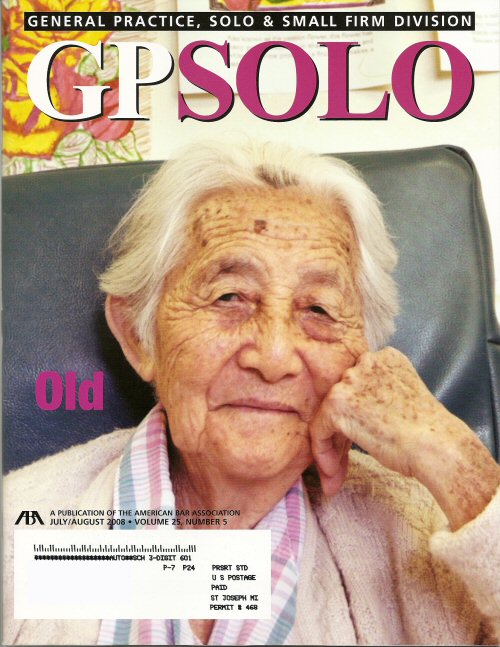
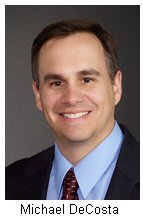 I agree with Russell Lawson's post on his
I agree with Russell Lawson's post on his  He had a reputation for weird marketing ideas, and my brief experience with him confirmed my initial reservations. Once, he burst – as far as a middle-aged tax attorney can burst – into my office to pitch a grandiose, high-cost, time-intensive marketing scheme. It took me a week to talk him out of it.
He had a reputation for weird marketing ideas, and my brief experience with him confirmed my initial reservations. Once, he burst – as far as a middle-aged tax attorney can burst – into my office to pitch a grandiose, high-cost, time-intensive marketing scheme. It took me a week to talk him out of it. 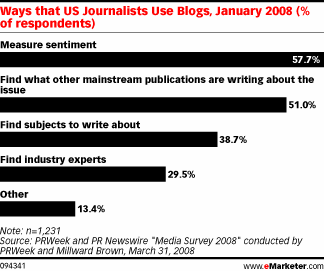 Steve Matthews makes a great point on his
Steve Matthews makes a great point on his 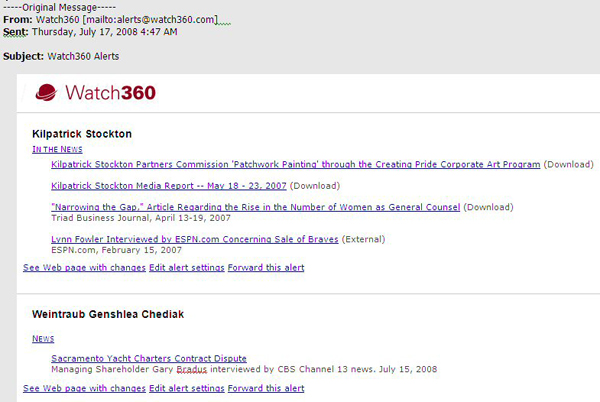
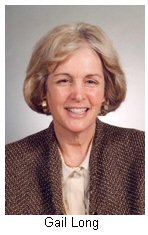 A new study by
A new study by  The Westin New York at Times Square in New York, NY, will be the place to be on September 16 and 17, 2008, when the annual
The Westin New York at Times Square in New York, NY, will be the place to be on September 16 and 17, 2008, when the annual 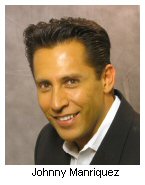 San Diego based construction law firm,
San Diego based construction law firm, 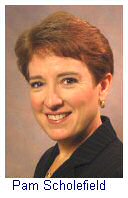 “Johnny is a perfect fit for this position and our firm culture” says lead attorney
“Johnny is a perfect fit for this position and our firm culture” says lead attorney 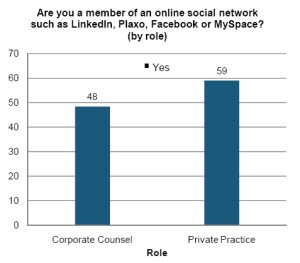
 But what lawyers really want is an online social network for lawyers only, like the members of the State Bar of Texas have. 41% of lawyers in private practice, and 48% of in-house lawyers are interested in joining a lawyers-only network.
But what lawyers really want is an online social network for lawyers only, like the members of the State Bar of Texas have. 41% of lawyers in private practice, and 48% of in-house lawyers are interested in joining a lawyers-only network. When Preston Gates & Ellis merged with Kirkpatrtck & Lockhart Nicholson Graham to form K&L Gates, CMO Jeff Berardi had to merge InterAction CRM with web-based Microsoft Sharepoint. Once it did so, it improved the number of RFPs it won by 40%.
When Preston Gates & Ellis merged with Kirkpatrtck & Lockhart Nicholson Graham to form K&L Gates, CMO Jeff Berardi had to merge InterAction CRM with web-based Microsoft Sharepoint. Once it did so, it improved the number of RFPs it won by 40%.
.jpg) Lawyers who are unable to meet their billable hour goals are wondering if their jobs are secure, according to the
Lawyers who are unable to meet their billable hour goals are wondering if their jobs are secure, according to the 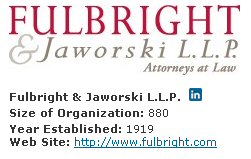 Martindale-Hubbell has connected itself to LinkedIn, the popular online social networking site. Take a look at the
Martindale-Hubbell has connected itself to LinkedIn, the popular online social networking site. Take a look at the 
 From the 6/30/08 issue of
From the 6/30/08 issue of 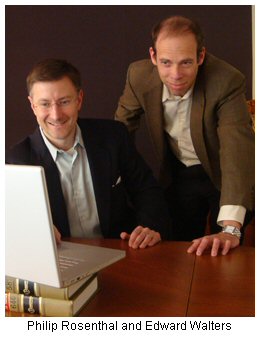 "The courts produce this stuff at taxpayer expense, it gets shipped to these foreign companies for free and then they charge us to read it," says Rosenthal, a Caltech-educated physicist who graduated from Harvard Law School.
"The courts produce this stuff at taxpayer expense, it gets shipped to these foreign companies for free and then they charge us to read it," says Rosenthal, a Caltech-educated physicist who graduated from Harvard Law School. Quote from a dissent by Chief Justice Roberts in a Supreme Court decision issued June 23:
Quote from a dissent by Chief Justice Roberts in a Supreme Court decision issued June 23: The absence of any right to the substantive recovery means that respondents cannot benefit from the judgment they seek and thus lack Article III standing. "When you got nothing, you got nothing to lose." Bob Dylan, "Like A Rolling Stone," on Highway 61 Revisited (Columbia Records, 1965).
The absence of any right to the substantive recovery means that respondents cannot benefit from the judgment they seek and thus lack Article III standing. "When you got nothing, you got nothing to lose." Bob Dylan, "Like A Rolling Stone," on Highway 61 Revisited (Columbia Records, 1965). Kevin O'Keefe reports on his
Kevin O'Keefe reports on his .jpg)



